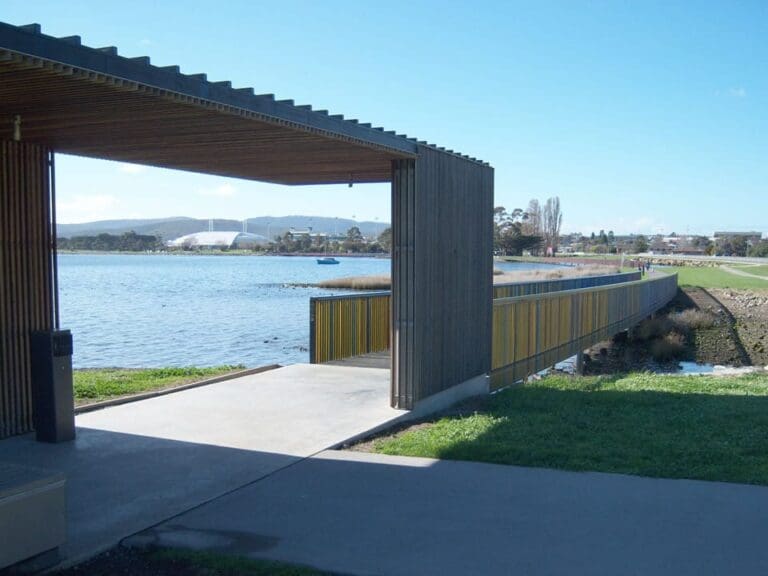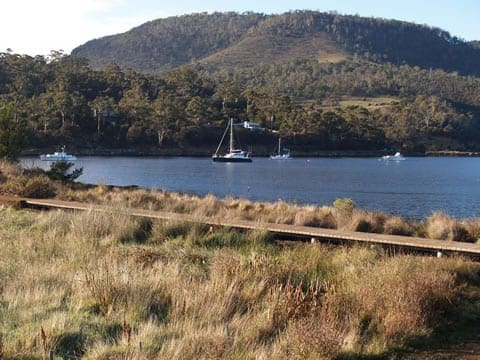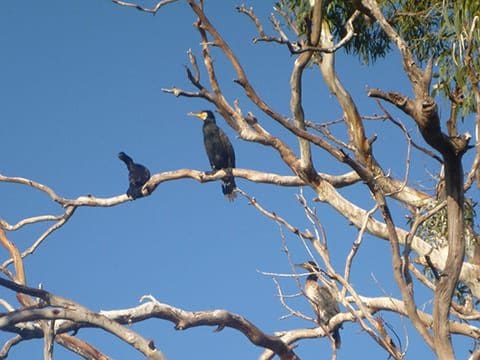Trail Fast Facts
Lowestoft Bay to Windermere Beach is a 4.5km, grade 2 hike in Claremont, Tasmania. This hike typically takes 1.5 hours to complete.
Hike Overview
These three stunning beachfront bays—Connewarre Bay, Windermere Bay, and another nestled along the Derwent Foreshore—are seamlessly connected by the Berriedale Foreshore Track and the Connewarre Bay to Windermere Bay Walking Track. This 4.5 km, Grade 2 hike winds through diverse vegetation, including native she-oaks and acacias, and typically takes about 1 hour and 30 minutes to complete as a return walk. For a shorter option, you can begin at Connewarre Bay for a 2.6 km return walk. Alternatively, the hike can be done one-way, but return transport will be necessary.
This scenic walk offers a serene experience for nature lovers and beach enthusiasts, providing a peaceful escape in the heart of Claremont, Tasmania.
Track Grade
Grade 2 (Easy) - A Gentle Introduction to Inclines: Grade 2 on the AWTGS represents easy walking tracks that offer a slightly more challenging experience compared to Grade 1. Similar to Grade 1, no prior bushwalking experience is required. The track surface is typically hardened or compacted and may have gentle hill sections or occasional steps. The total distance of a Grade 2 walk is typically no greater than 10 kilometers. These walks are still suitable for families with a bit more experience or those seeking a gentle introduction to some inclines.
Map and GPX file
Max elevation: 16 m
Min elevation: 2 m
Total climbing: 52 m
Total descent: -52 m
Shorter version from Connewarre Bay
Max elevation: 16 m
Min elevation: 2 m
Total climbing: 22 m
Total descent: -22 m
Trailhead
Sorry, no records were found. Please adjust your search criteria and try again.
Sorry, unable to load the Maps API.
Getting there
Lowestoft Bay is accessible from Main Road at the Australian Trackers and War Dogs Memorial Park. To reach Connewarre Bay, take Main Road and turn onto Connewarre Crescent. Windermere Beach is best accessed through Knights Point Reserve via Windermere Beach Road.
About the region
Claremont is a suburb of the City of Glenorchy, part of the greater Hobart area, Tasmania, Australia. It is named after Claremont House, which was built in the 1830s by local settler Henry Bilton, who named it after one of the royal homes of England.
Suggest an edit
Spotted a change on this trail? Maybe there are new features, the route has shifted, or the trail is permanently closed. Whatever the update, I’d love your input. Your feedback helps fellow hikers stay informed and ensures that our trail info stays fresh and reliable.
Similar trails nearby
Looking for things to do in Claremont or nearby? Try these similar hikes or bushwalks.
Let someone know
Adventure with Confidence: Register Your Trip Plans
Before you hit the trail, take a moment to fill out our trip intentions form. It’s a simple way to share important details about your hike with family or friends. If things don’t go as planned and you’re not back on time, they can easily notify emergency services, helping to ensure a quick response and reducing worry. Enjoy your outdoor adventure knowing that you’ve taken a smart step for your safety.
Gear to consider
What you carry in your pack will depend on the weather, terrain, time of year, type of adventure, and personal preferences. Having trouble deciding what gear’s right for you? My free planning, food and packing checklists provide an introduction to things your could consider (as well as the Ten Essentials) on your day, overnight and multi-day adventures. Customise your kit according to your personal needs, always considering safety first.
Explore Safe
While planning your hike, it’s important to check official government sources for updated information, temporary closures and trail access requirements. Before hitting the trail, check local weather and bushfire advice for planned burns and bushfire warnings and let someone know before you go. Plan ahead and hike safely.
Weather
Acknowledgement of Country
Trail Hiking Australia acknowledges the Traditional Owners of the lands on which we hike and pay respects to their Elders, past and present, and we acknowledge the First Nations people of other communities who may be here today.






